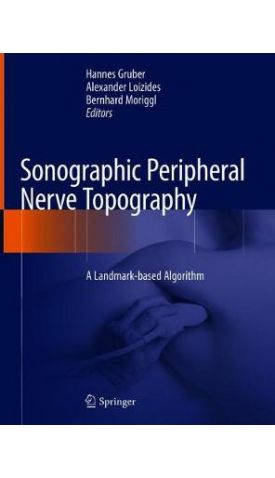אנו משתמשים ב-Cookies כדי לשפר את החוויה שלך. כדי לקיים ההנחיה החדשה של e-Privacy, עלינו לבקש את הסכמתך להגדיר את ה-Cookies. קבלת מידע נוסף.
Sonographic Peripheral Nerve Topography: A Landmark-Based Algorithm
This first of its kind richly illustrated book provides a tabular and schematic representation of all the peripheral nerves in the human body using a standardized landmark-based algorithm for the definition of the nerve’s “Point of optimal visibility (POV)”. In this atlas the nerves of the human body are depicted with high-frequent ultrasound probes with frequencies up to 24 MHz: it presents not only the “known” large nerves (N. ischiadicus, N. femoralis, N. medianus etc.), but also the tiny nerves you have learned in your anatomy sessions but forgotten in the course of time! Based on clear illustrations using palpaple/visible external and easily accessible internal landmarks, it offers “nerve sonographers” a clear sonoanatomic guidance on how to easily find the nerve. Additionally, it describes the exact positioning of the probe so that each nerve can be found at its point of optimal visibility.
These mental maps for nerve sonographeurs are intended not only for beginners but also for “advanced” specialists requiring instructions on how to easily find even tiny peripheral nerves: especially for neurologists, anaesthesiologists, radiologists, pain practionioners, rheumatologists and surgeons who seek a clear standardized step by step manual on “Where do I find a nerve the easiest?”
| מהדורה | 2019 ed. |
|---|---|
| עמודים / Pages | 228 |
| פורמט | Hardback |
| ISBN10 | 303011032X |
| הוצאה לאור | Springer |
| תאריך יציאה לאור | 15 באפר׳ 2019 |
| תוכן עניינים | How to Use This Book Effectively: A User’s Guide! Neck Upper Arm, Forearm and Hand Pages 55-109 Gluteal Region Thigh, Lower Leg, and Foot
|
| Author | Gruber |



Login and Registration Form